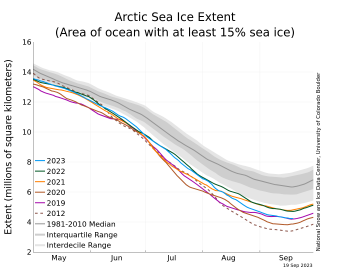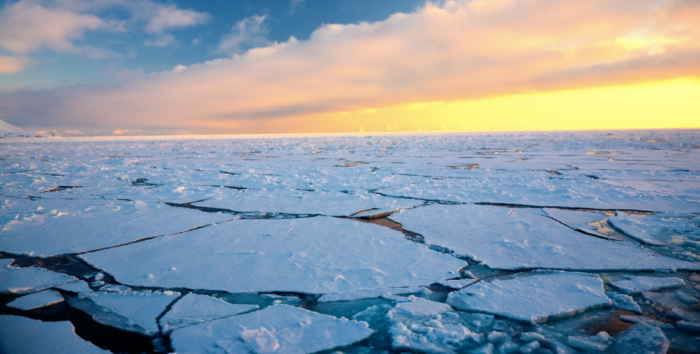According to new satellite data released by the US National Snow and Ice Data Center (NSIDC), Arctic sea ice likely reached its annual minimum extent of 4.23 million square kilometers (1.63 million square miles).
As explained, the 2023 minimum is sixth lowest in the nearly 45-year satellite record. The last 17 years, from 2007 to 2023, are the lowest 17 sea ice extents in the satellite record.
In the Antarctic, sea ice extent set unprecedented record lows through most of the growth season. Highly variable conditions are typical of Antarctic sea ice extent near the seasonal maximum, and ice may still continue to grow but will unlikely avoid setting a record low. The previous five lowest maximums on record include 1986, 2002, 2017, 1989, and 2022. The maximum for Antarctic sea ice typically occurs in late September or early October, but has been as early as August 30.

This year’s minimum set on September 19 was 840,000 square kilometers (324,000 square miles) above the satellite-era record minimum extent of 3.39 million square kilometers (1.31 million square miles), which occurred on September 17, 2012 (Figure 2). It is also 1.99 million square kilometers (770,000 square miles) below the 1981 to 2010 average minimum extent, which is equivalent to nearly three times the size of Texas.
In the 45-year-satellite record, 17 of the lowest minimums have all occurred in the last 17 years.
The overall, downward trend in the minimum extent from 1979 to 2023 is 12.5 percent per decade relative to the 1981 to 2010 average. The loss of sea ice is about 77,800 square kilometers (30,000 square miles) per year, equivalent to losing the state of Nebraska or the Czech Republic annually.






























































Does the dashed line for 2012 mean anything?